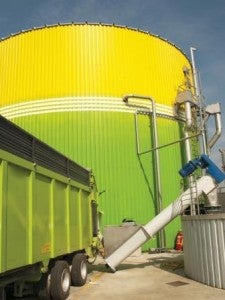August is typically a quiet time of year, and particularly so for work that concerns the nation’s capital. But amidst the dog days of summer, federal regulators made a fairly significant move this month to preserve stricter emissions controls for thousands of large storage vessels used to temporarily house crude oil, condensate and other liquids.
Last Monday, the U.S. Environmental Protection Agency (EPA) issued a rule that keeps in place an important aspect of its oil and gas pollution standards (or New Source Performance Standards, NSPS) issued last year, including provisions for storage tanks that emit six or more tons of ozone-forming air pollutants annually. These standards were intended to help reduce ground-level ozone and methane emissions in areas where oil and gas production occur. EPA proposed revisions to these standards in April of 2013 in response to industry petitions for less stringent requirements that would have considerably diminished important gains made by the NSPS to protect public health and the environment. EDF and five other environmental organizations joined together to strongly encourage EPA’s reconsideration, opposing these revisions in detailed technical comments filed with the agency.
EPA’s final rule is good news in the fight for cleaner, healthier air. Whereas the April 2013 proposal would have created a broad exemption from emission controls for thousands of recently-built tanks, the final rule ensures that operators of all new storage tanks that pass the six ton threshold will be required to reduce emissions by 95 percent. Controlling emissions from oil and gas storage tanks is important. Roughly 20,000 newly constructed tanks have been added in the field since August 2011 and these receptacles, if not properly managed, could be a large source of ozone forming pollution, as well as climate altering methane emissions. Had EPA proceeded to establish a broad exemption for these tanks, millions of tons of additional ozone-forming pollution and hundreds of thousands of tons of methane would have been released into the atmosphere.
Ground-level ozone pollution (commonly known as “smog”) is a public health issue known to cause a host of respiratory problems. Exposure, even in low concentrations, can contribute to serious adverse health impacts, including decreased lung function and premature mortality. Children, the elderly, Americans with existing lung and heart disease, and those active outside are especially vulnerable. Oil and gas development is a significant source of pollutants that result in ozone formation and also a contributor to degrading air quality in several states around the country, including Wyoming and Colorado.
Proven, cost-effective technologies needed to meet EPA’s storage tank standards already exist and many leading companies in the oil and gas sector have been using such technologies for years, even though some industry groups pushed back against regulations. As part of EPA’s ruling, regulators mandated emission controls for all storage tanks added since August 2011 on a phased-in schedule (the new compliance date was pushed back from October 2013 to April 2015).
Despite this welcome news on storage tanks, the final EPA rule includes several other provisions EDF and its partner organizations have objected to in comments – including a 6-month delay in the compliance deadline for certain newer storage tanks and a provision allowing tanks that bring their emissions below a certain level to stop using emission control devices. Going forward, EDF will continue to advocate for rigorous implementation of these standards, as well as the adoption of additional protective measures to reduce emissions of harmful pollutants from the oil and gas sector.
Elizabeth Floyd, a legal intern in EDF’s Washington, DC office, assisted in preparing this post.










